Introduction
In the realm of autism interventions, Pivotal Response Training (PRT) emerges as a beacon of hope, offering a dynamic approach tailored to enhance the lives of children on the spectrum. This naturalistic behavioral intervention focuses on pivotal areas of development, such as motivation and self-initiation, which are crucial for fostering meaningful communication and social skills. By seamlessly integrating learning into everyday activities, PRT not only engages children but also empowers parents and caregivers to play a vital role in their child’s growth.
As research continues to underscore the importance of equitable participation in various life domains, the effectiveness of PRT shines through, providing families with the tools they need to navigate challenges and celebrate achievements. With success stories illustrating transformative outcomes, PRT stands as a testament to the power of focused, supportive interventions in creating a brighter future for children with autism.
What is Pivotal Response Treatment?
Pivotal Response Training (PRT) is distinguished as a naturalistic behavioral intervention specifically designed for youngsters with autism. This approach emphasizes pivotal areas of development that are essential for enhancing a young person's overall functioning. By concentrating on key behaviors such as motivation and self-initiation, PRT fosters significant improvements in communication, social skills, and learning.
At its core, PRT employs naturalistic teaching methods that leverage a young person's interests to enhance engagement. This means that sessions are not confined to structured environments; instead, they occur in everyday settings, making learning relevant and enjoyable. The focus on motivation helps young individuals see the value in engaging with their peers and caregivers, while self-initiation encourages them to take the lead in their learning experiences.
Research highlights the importance of engaging young individuals in various areas of their lives—school, home, and leisure—as critical for their mental health and development. Dr. David (Dan) R. Offord, a renowned pediatric psychiatrist, articulated this notion, stating, 'Growing up in Canada is like a race.'. 'I do not mind if my kids are in a race as long as the race is fair.' This highlights how essential it is for young individuals with disabilities to have fair chances to flourish.
Furthermore, PRT is supported by evidence-based practices that have been recognized by institutions like the National Academies of Sciences, Engineering, and Medicine. Their commitment to providing high-quality advice on health and education informs the strategies used in interventions like PRT. By focusing on essential skills, the training not only provides young individuals with necessary tools for communication and social interaction but also aims to reduce chronic sources of stress, ensuring a supportive environment for both young individuals and their families.
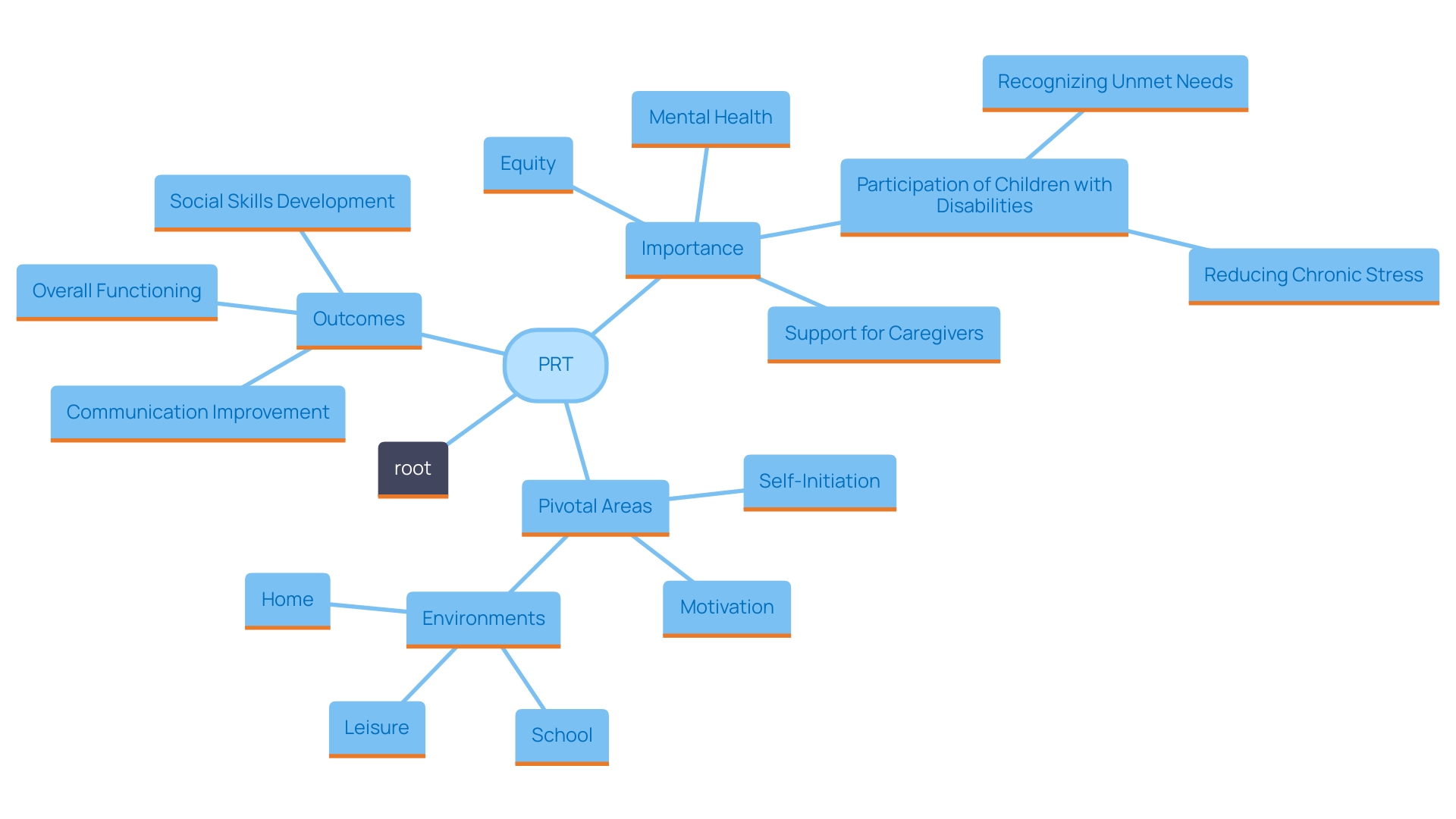
Key Principles of PRT
Pivotal Response Training (PRT) is anchored in several foundational principles that enhance its effectiveness for individuals with autism. One of the core elements is learner-directed education, which emphasizes tailoring activities to align with the individual's interests. This approach not only captures their attention but also fosters a more natural learning environment. Additionally, PRT utilizes natural reinforcement, meaning that rewards are meaningful and relevant to the individual, helping to sustain their motivation and engagement.
Central to PRT is the focus on pivotal behaviors—skills that, when developed, can lead to significant improvements across various domains of a young person's life. By concentrating on these pivotal skills, PRT aims to enhance communication, social interaction, and adaptive behaviors, thus promoting overall development.
Research underscores the importance of such methods. Dr. David (Dan) R. Offord, a renowned psychiatrist for youth, emphasized that for individuals with disabilities, engaged and well-supported participation in essential life domains—such as school and home—is crucial for mental health. He highlighted that acknowledging both unmet needs and the strengths youngsters possess is essential in alleviating chronic stress and ensuring caregivers have the required resources to promote healthy growth.
This holistic approach aligns with recent initiatives aimed at improving experiences for neurodivergent individuals in various settings. For instance, companies like Forta Health are exploring new methodologies that deviate from traditional applied behavior analysis (ABA), which has faced criticism for being overly controlling. By concentrating on grasping the unique needs and viewpoints of young individuals, these newer approaches strive to establish a more nurturing atmosphere that honors the individuality of each young person.
In summary, PRT's principles not only facilitate effective learning but also promote a comprehensive understanding of the needs of individuals with developmental disorders, ensuring their growth is nurtured in a way that is both meaningful and respectful.
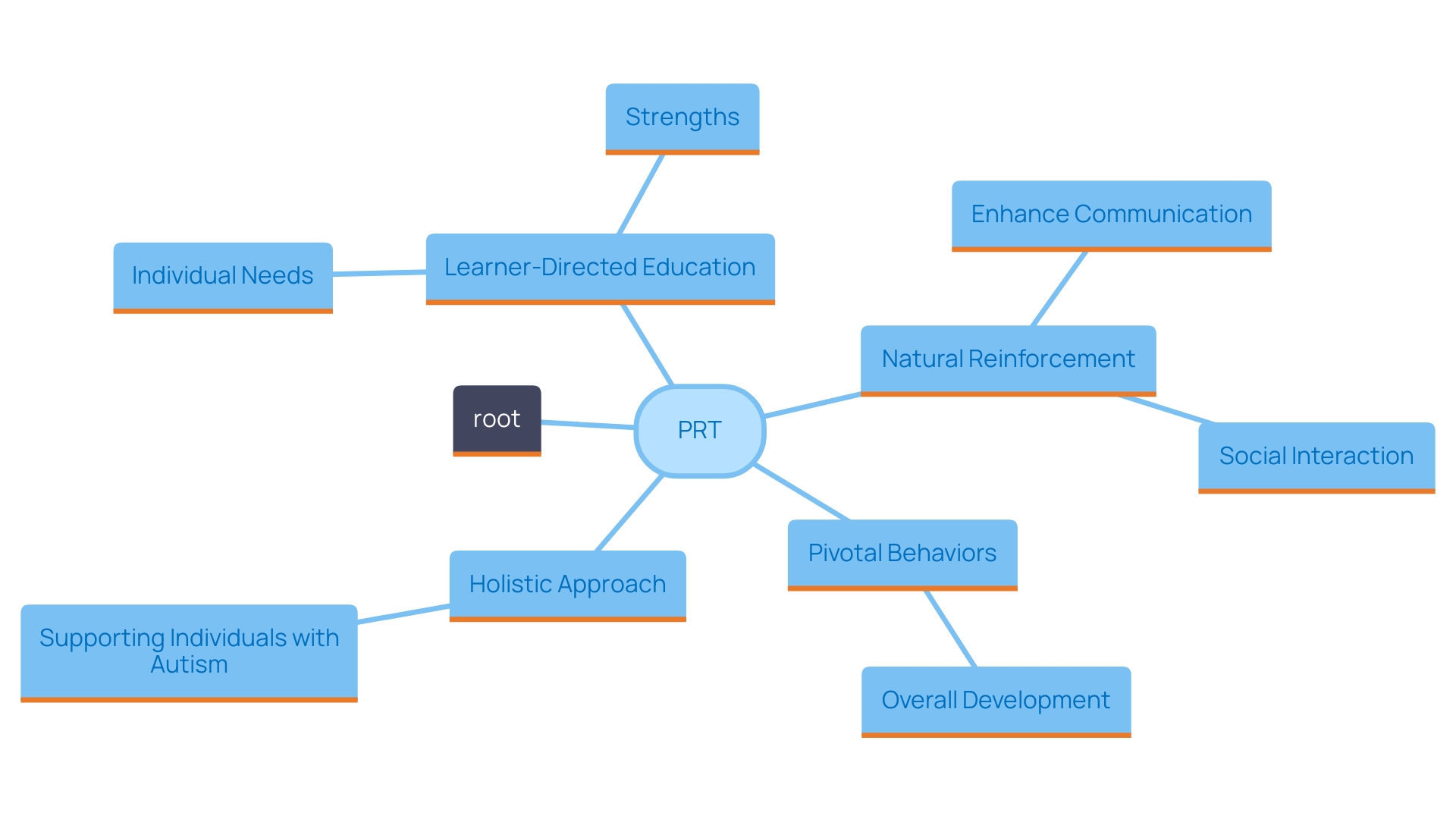
Pivotal Areas of Development
Pivotal Response Training (PRT) focuses on enhancing critical skills that can dramatically improve the quality of life for young individuals with autism. The core areas of development addressed by PRT include motivation, interpersonal initiations, self-management, and the ability to respond to multiple cues. By fostering these pivotal skills, young individuals are better equipped to navigate social and educational settings, which can lead to significant improvements in their overall development.
Studies show that active involvement in different areas of life—such as education, home, and recreation—is vital for the mental health and well-being of young individuals with disabilities. As Dr. David (Dan) R. Offord pointed out, ensuring a just environment for all young individuals, including those with autism, is vital for creating equal opportunities for success. This is especially crucial as many autistic individuals encounter difficulties that can hinder their interactions with others and academic success. Enhancing pivotal skills through PRT not only promotes better communication and social interaction but also helps mitigate issues related to emotional and behavioral problems, which are common among individuals on the spectrum.
Moreover, proof indicates that early assistance, like PRT, can result in the best results for youngsters diagnosed with this condition. The shift from risk factors to the display of symptoms can be handled more efficiently with prompt and suitable training, guaranteeing that young individuals have access to the resources and assistance they require. By equipping parents and caregivers with the tools to implement PRT strategies, we can significantly enhance the developmental trajectory of youth with autism, allowing them to thrive in their communities.
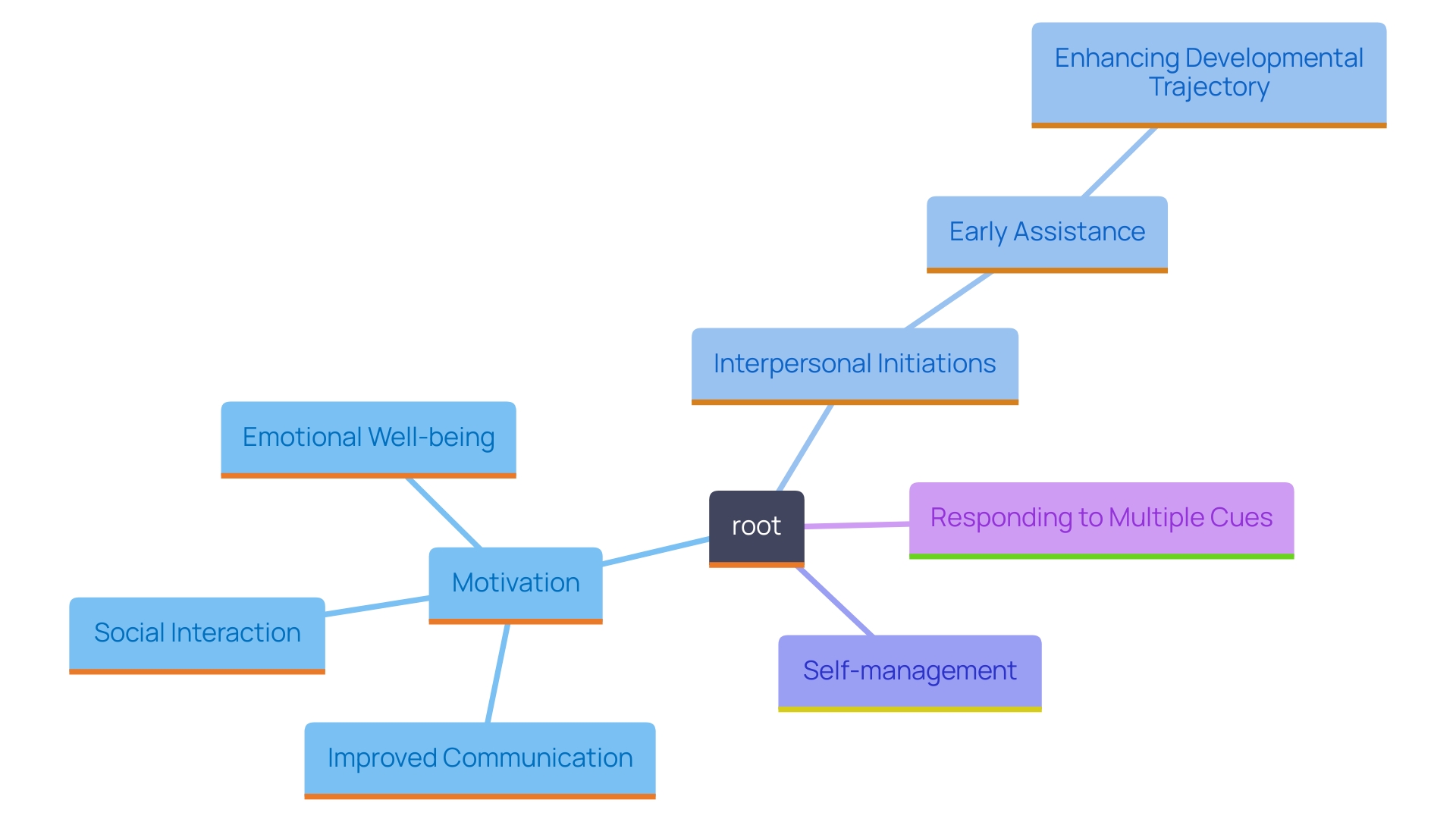
How PRT is Applied
Pivotal Response Training (PRT) can be effectively utilized across various environments, including home, school, and community settings. This intervention is particularly impactful as it leverages everyday activities to facilitate learning and interactions. For example, during playtime, parents can create rich opportunities for communication by incorporating toys that captivate their offspring's interest. This not only enhances engagement but also promotes essential skills such as social interaction and self-initiation.
The importance of such naturalistic teaching methods cannot be overstated. Engaged, peaceful, and well-supported involvement in daily life is crucial for the mental health and development of young individuals, especially those with disabilities. As Dr. David (Dan) R. Offord emphasized, ensuring that young people have equitable opportunities to thrive is a cornerstone of a healthy society. By recognizing both the unique needs and strengths of young individuals, including those with autism, caregivers can mitigate stress and foster an environment conducive to growth.
Furthermore, studies indicate that individuals with autism, particularly those who encounter emotional and behavioral difficulties, are at an increased risk of being excluded from significant community engagement. Hence, employing PRT strategies in familiar contexts not only supports learning but also ensures that these individuals can engage fully in their communities. By creating supportive environments that utilize young people's interests, PRT aims to bridge the gap in interpersonal connections and adaptive behaviors, ultimately enriching their overall quality of life.
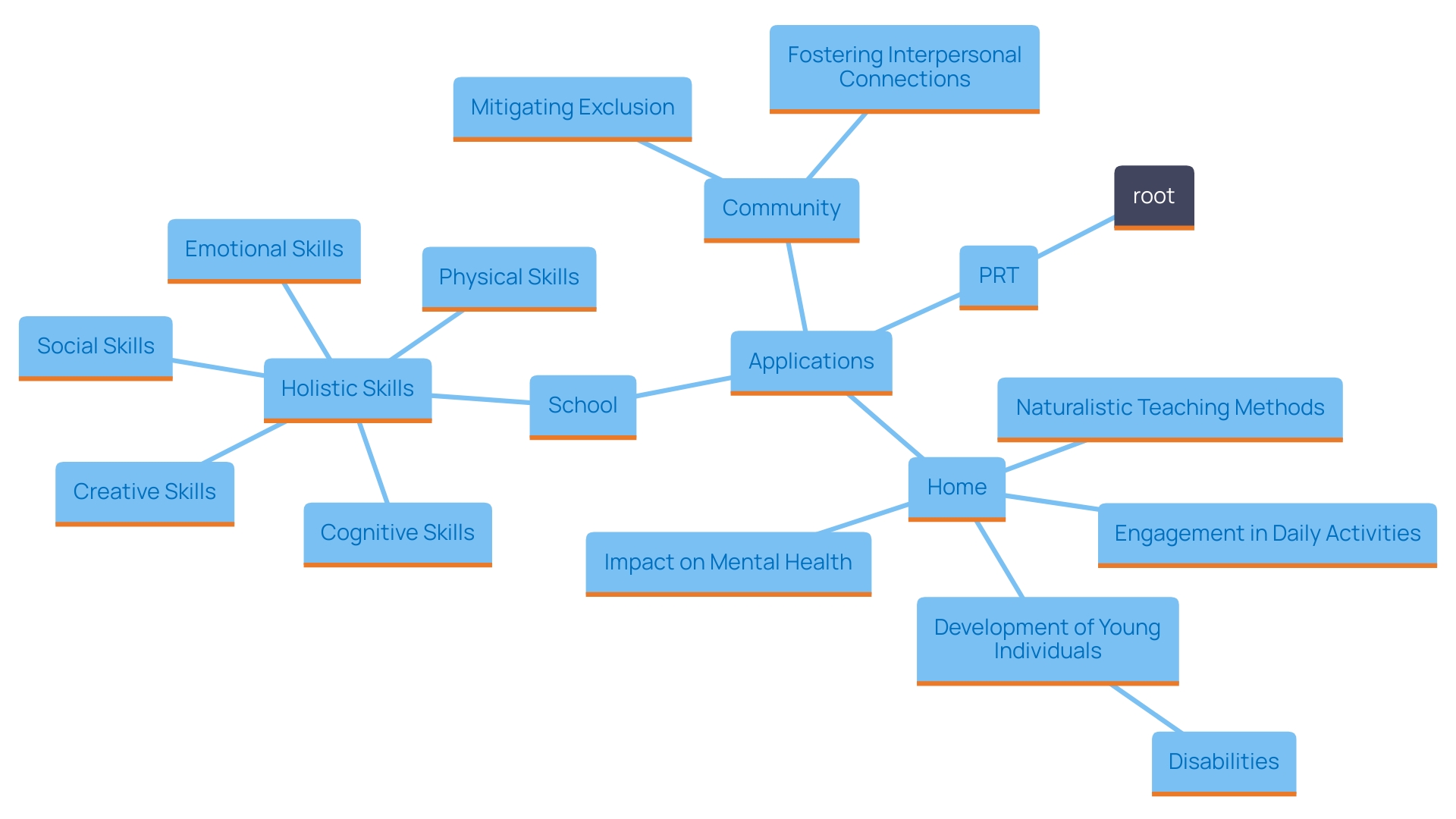
Benefits of PRT
The advantages of Pivotal Response Training (PRT) go well beyond immediate skill development, fostering a significant transformation in young people's motivation and engagement levels. This engaging approach often leads to spontaneous communication and richer interactions, which are essential for their interpersonal development. Parents and caregivers frequently express their satisfaction when witnessing their youngsters flourish in social contexts, as they become more independent learners and gain confidence in their abilities.
Research highlights that individuals with autism who receive effective interventions like PRT experience enhanced participation in daily activities, which is essential for their overall mental health. According to Dr. David (Dan) R. Offord, a psychiatrist specializing in youth, the engaged and well-supported involvement of young individuals, particularly those with disabilities, in various life domains is fundamental to promoting mental well-being. This perspective aligns with the growing recognition that providing both resources and support to caregivers is vital for fostering healthy development in youth.
Moreover, the impact of PRT can extend to addressing chronic stressors in the lives of young individuals. By recognizing the unique needs and strengths of each individual, PRT can help reduce barriers to social participation, ensuring that all youth, including those with autism, can thrive in their communities. This comprehensive method of intervention not only benefits the young individuals involved but also empowers parents and caregivers, creating a supportive environment where families can thrive together.
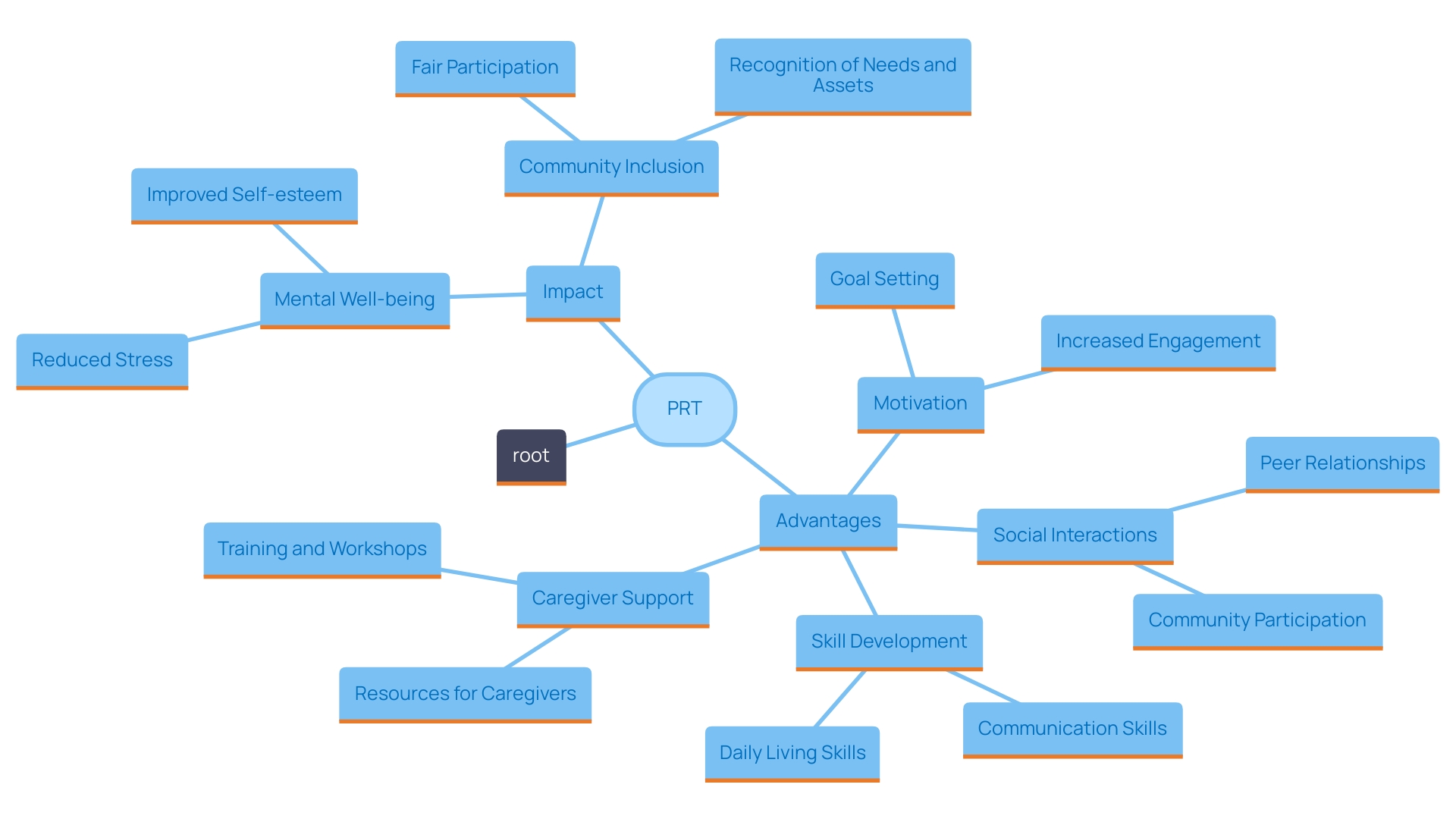
PRT in Everyday Environments
One of the most compelling features of Pivotal Response Training (PRT) is its inherent flexibility, allowing families to seamlessly weave its techniques into their daily lives. Whether during mealtime, playtime, or while running errands, PRT strategies can be naturally integrated, making learning feel organic and less formal. This naturalistic approach not only reinforces pivotal skills but also capitalizes on the young one's interests, enhancing engagement and promoting effective communication.
Research highlights the significance of active involvement for young individuals, especially those with disabilities. As Dr. David (Dan) R. Offord noted, the active and supportive involvement of young individuals in key areas of their lives, such as home and school, plays a vital role in their mental health. Families utilizing PRT contribute to a more equitable environment, ensuring that each young person, regardless of ability, has opportunities to thrive and develop crucial social skills. This emphasis on natural environments for education aids in alleviating stress for both youngsters and parents, promoting a healthier family dynamic and guaranteeing that caregivers possess the resources they require to support their offspring's growth.
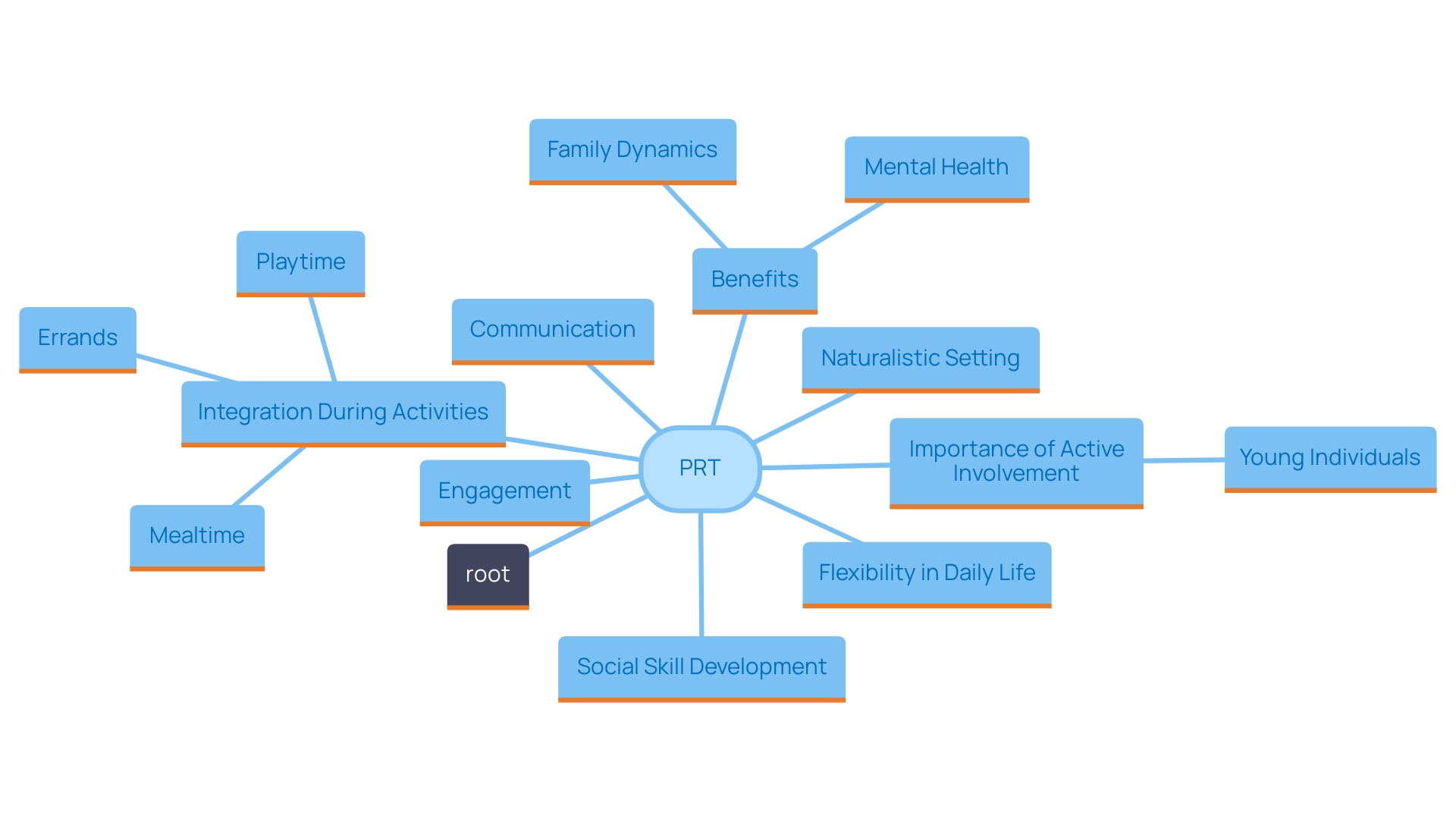
The Role of Parents and Caregivers in PRT
Parents and caregivers are essential to the success of Pivotal Response Training (PRT), a crucial intervention for youth with autism. Their active participation not only enhances the learning process but also fortifies the parent-child relationship. Engaging with PRT strategies allows parents to model appropriate behaviors, effectively provide reinforcement, and cultivate a nurturing environment conducive to their offspring's development.
The role of parents is essential in fostering engagement, motivation, and self-initiation in young individuals. By leveraging their offspring's interests, caregivers can create naturalistic teaching moments that resonate with the individual's unique preferences. This tailored approach not only facilitates learning but also empowers parents to recognize and celebrate the strengths their offspring bring to their communities.
Furthermore, as Dr. David (Dan) R. Offord, a renowned pediatric psychiatrist, eloquently stated, 'Growing up in Canada is like a race.'. 'I do not mind if my kids are in a race as long as the race is fair.' This sentiment underscores the significance of equitable participation in various domains of life—school, home, and leisure. For individuals with disabilities, including those with autism, this equity is crucial for their mental health and overall well-being.
Supporting parents with the resources they need is paramount. When caregivers are equipped with effective strategies and tools, they can significantly reduce chronic sources of stress, thereby fostering a more supportive environment for those in their care. Consequently, this involvement can result in significant everyday interaction with others, which is especially crucial for autistic youth, particularly those encountering extra emotional and behavioral difficulties.
In summary, the collaboration between parents and PRT not only enhances the learning experience of young ones but also contributes to a more inclusive and equitable society, ultimately helping all youngsters thrive.
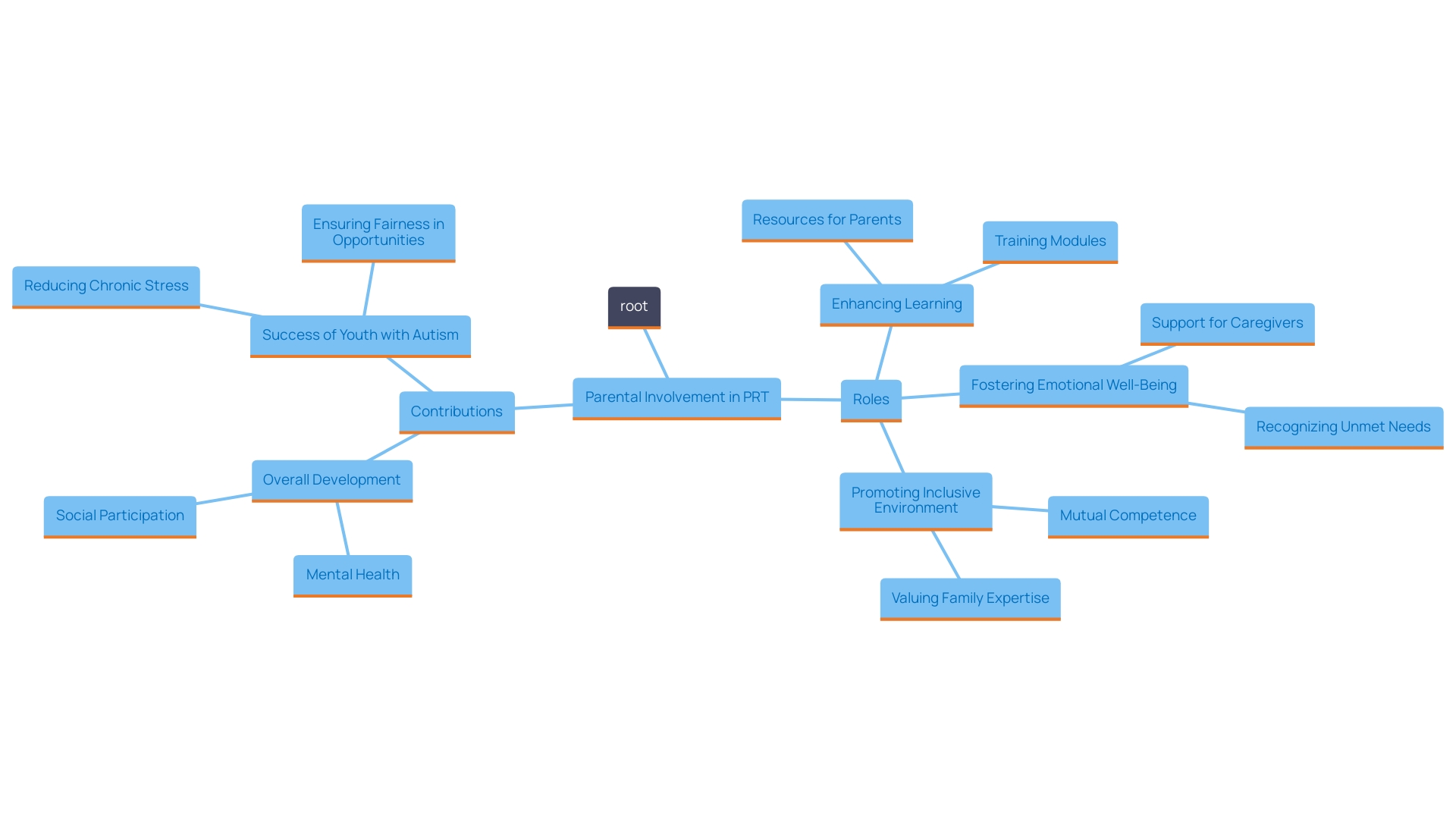
Evidence and Research on PRT
Studies show that Pivotal Response Training (PRT) is very effective in improving communication abilities and interpersonal interactions for youngsters with autism. A multitude of studies has demonstrated the positive influence of PRT on pivotal behaviors, which are foundational to a young person's overall development. For instance, targeted skills such as motivation and self-initiation foster significant improvements in communication and interpersonal engagement.
Notably, PRT utilizes naturalistic teaching strategies, harnessing a young person's interests to boost engagement and learning. By concentrating on essential skills, it not only enhances communication and interaction with others but also fosters adaptive behaviors that assist young individuals in integrating better into their surroundings.
Continuing research underscores PRT's adaptability and effectiveness across diverse populations and settings. Recent research highlights the significance of a comprehensive approach, as individuals with developmental disorders frequently encounter obstacles that can result in their exclusion from meaningful involvement in everyday activities. For example, autistic individuals who also experience co-occurring emotional and behavioral issues are at a heightened risk of disengagement from social interactions.
The evidence surrounding PRT is not only compelling but also crucial in addressing the unmet needs of youth with autism and their families. As Dr. David (Dan) R. Offord, a prominent psychiatrist for young people, poignantly stated, "Engaged, peaceful and well-supported participation of children and youth with disabilities... is a fundamental determinant of mental health." This viewpoint emphasizes the essential function of interventions such as PRT in fostering fair opportunities for every young person, guaranteeing they receive the assistance required for their healthy growth.
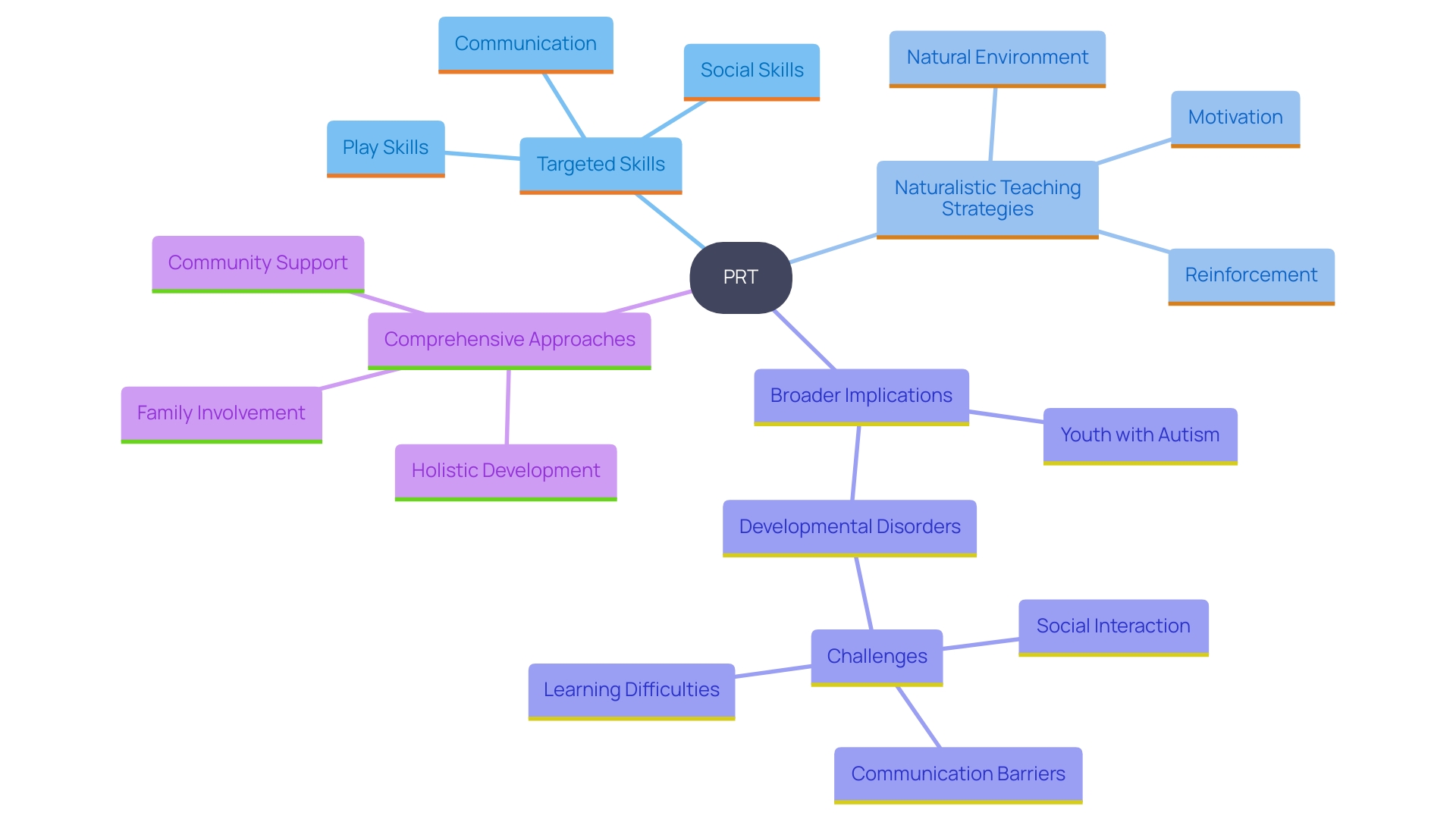
Success Stories and Case Studies
Families from diverse backgrounds have shared inspiring success stories showcasing the transformative effects of Pivotal Response Training (PRT) on their offspring's lives. These case studies highlight significant advancements in critical areas such as communication, independence, and social integration. For instance, Dr. David (Dan) R. Offord, a well-respected psychiatrist for youth, emphasized the importance of equitable participation for individuals with disabilities, stating, "Growing up in Canada is like a race.". 'I do not mind if my kids are in a race as long as the race is fair.' This perspective emphasizes the essential role that supportive interventions like PRT play in leveling the playing field for youth who often face unique challenges.
One powerful example is Maria's journey, where she faced anxiety in her workplace. Through tailored PRT techniques focusing on self-advocacy and team collaboration, she not only learned to ask questions but also became a confident leader within her team. This progress exemplifies how PRT can enhance a young person's ability to engage meaningfully in various life domains, from home to school and beyond.
Additionally, the necessity for efficient interaction and community involvement is vital for youth with autism, particularly those facing simultaneous emotional and behavioral challenges. Research indicates that autistic individuals are at a heightened risk of exclusion from daily social interactions, which underscores the importance of interventions like PRT. By fostering pivotal skills such as motivation and self-initiation, PRT enables young individuals to overcome barriers, leading to improved mental health and overall well-being.
As more families share their success with PRT, it provides hope and inspiration for others embarking on similar journeys, illustrating that with the right support and resources, children can thrive and achieve remarkable milestones.
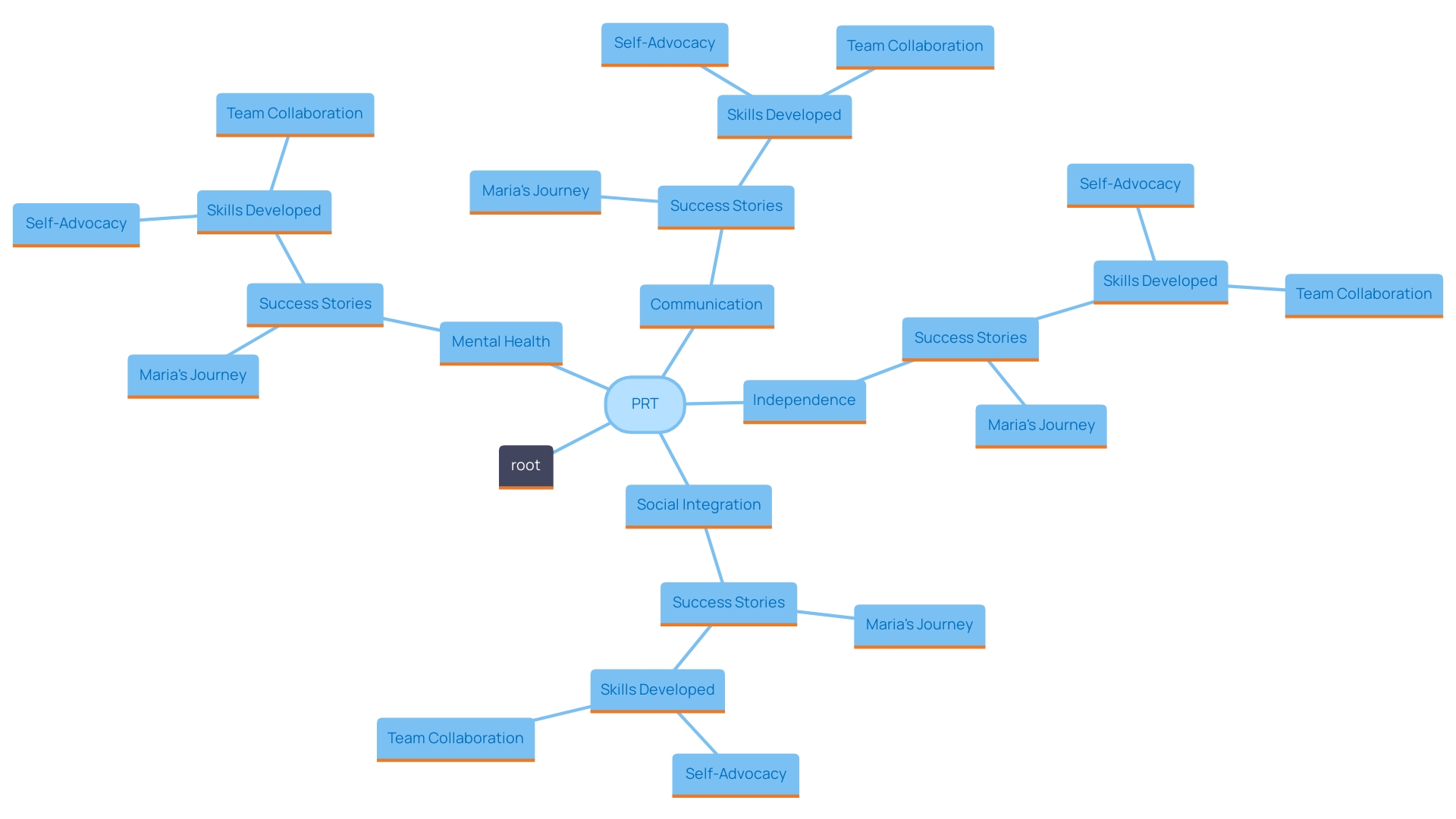
Conclusion
Pivotal Response Training (PRT) emerges as a powerful intervention that is transforming the lives of children with autism. By focusing on pivotal areas such as motivation, social initiations, and self-management, PRT equips children with essential skills that enhance their communication and social interactions. This approach is rooted in naturalistic teaching methods, allowing learning to occur seamlessly within everyday contexts, making it both engaging and relevant.
The active involvement of parents and caregivers is fundamental to the success of PRT. Their engagement not only enhances the learning experience but also strengthens the parent-child bond. By employing strategies that resonate with their child's interests, caregivers can create enriching environments that foster growth and development.
This collaborative effort ensures that children are supported in navigating challenges, ultimately leading to improved mental health and well-being.
Research supports the effectiveness of PRT, highlighting its adaptability across various settings and populations. Success stories from families illustrate the profound impact of this intervention, showcasing remarkable advancements in children's independence and social integration. As awareness of PRT continues to grow, it stands as a beacon of hope, empowering families to advocate for equitable opportunities and meaningful participation in all aspects of life.
With the right tools and support, children with autism can thrive, enriching their lives and communities.




